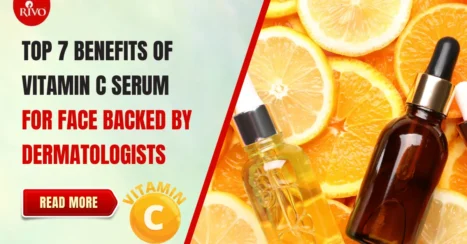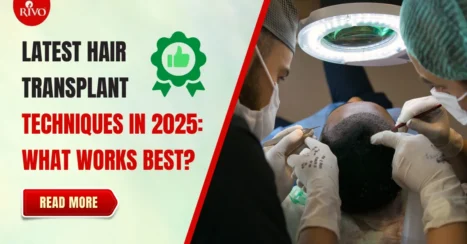When one hears the word summer, the initial few things that will most likely appear in the person’s mind are going to be beach vacations, sunshine, and outdoor activities. However, along with this much fun, there comes a typical skin related problem that affects millions of people every year and that is sunburns. So, what are sunburns, and how can you recover from them quickly? In this comprehensive guide, we’ll explore what are sunburns, their stages, symptoms, healing techniques, and the best ways to protect your skin.
What are Sunburns?
Before diving into remedies and treatments, it’s important to understand what are sunburns from a medical perspective. Sunburns are a form of skin damage caused by overexposure to ultraviolet (UV) radiation, primarily from the sun or artificial sources like tanning beds. The skin to absorb unnecessary UV radiations, an inflammatory response will be instigated – inflammation, pain, and in more serious cases, blistering and peeling.
Melanin is present in the skin of a human being which protects against UV rays to some extent. Nevertheless, when UV radiation extends past the capacity of the organ to protect own self, damages are caused to the cell resulting to a sunburn. So, if you’ve ever asked, what are sunburns, now you know — they are your skin’s way of telling you it’s been injured by UV rays.
Causes of Sunburns -
Understanding what are sunburns also involves looking at the common causes behind them. Here are the primary culprits:
- Prolonged exposure of the sun with no use of sunscreen.
- Tanning bed and artificial UV light.
- Altitudes which are high where UV radiation is stronger.
- Reflected solar light off water, snow or sand.
- Some drugs that make a person sensitive to sunlight
It is from knowing these causes that you are able to prevent yourself from getting sunburnt in the first place.
Stages of Sunburn: From Mild to Severe -
To understand what are sunburns, it’s vital to recognize that not all sunburns are created equal. There are three major stages, each worse than the other.
- First-Degree Sunburn (Mild)
- Redness and tenderness
- Warm or hot on touch
- Slight swelling
- Appears 2–6 hours after sun exposure
- Peeling may be observed after some days.
- Second-Degree Sunburn (Moderate)
- Intense redness and pain
- Blistering
- Skin swelling and inflammation
- May result in dehydration and fatigue
- Takes more than one week to heal
- Third-Degree Sunburn (Severe, Rare)
- Deep tissue damage
- Medical emergency
- May include fever, chills, infection
- Requires immediate professional care
Recognizing these stages not only helps in knowing what are sunburns but also determines how quickly and effectively they can be treated.
Symptoms of Sunburn -
Other than redness and peeling, some other symptoms may take place:
- Burning sensation or pain
- Itching and irritation
- Headaches
- Fever and chills (in severe cases)
- Dehydration
- Nausea
The symptoms may develop within several hours and it is why many people do not note that they receive a sunburn until the evening after they are in the sun.
5 Ways to Speed Up Sunburns Healing -
The process of getting healed from a sunburn does not have to be a long and painful process. Once you understand what are sunburns, it’s easier to follow the best remedies to speed up recovery.
- Cool Compresses and Showers
- Apply cold compress or take shower with cool temperature to calm red skin.
- It is advisable not to use hot water as it can increase the effect of the burn.
- Stay Hydrated
- Sunburns cause the body to lose fluid through the skin.
- Drink lots of water to rehydrate the body and avoid dehydration.
- Moisturize with Aloe Vera
- Aloe vera is greatly known for its anti-inflammatory and cooling abilities.
- Select a pure aloe gel or lotion without alcohol and fragrances.
- Over-the-Counter Medications
- Pain and inflammation lowering can be achieved with us of NSAIDs such as ibuprofen or aspirin.
- Antihistamines may help with itching.
- Avoid Further Sun Exposure
- You should stay in your house or wear protective clothing when having to leave.
- Give your skin rest and let it heal.
- Do Not Pop Blisters
- If blisters develop, do not pop them to prevent infection.
- Burst by oneself if there is no red streak in the area: Clean off gently and apply an antibiotic ointment.
Prevention: How to Never Ask “What Are Sunburns?” Again
The best practice of how to be treated for sunburn is to never get a sunburn. If you consistently protect your skin, you’ll never have to ask what are sunburns again.
Prevention Tips:
- Put broad-spectrum sunscreen of SPF 30 or more.
- Repeat the application of sunscreen after every 2 hours or after swimming/sweating.
- Use protective clothes, hats and sunglasses.
- Seek shade during peak sun hours (10 a.m. to 4 p.m.).
- Avoid tanning beds altogether.
Long-Term Effects of Sunburn -
If you still wonder what are sunburns in terms of long-term impact, consider this: repetitive sunburns greatly elevate chances of premature aging and skin cancer, particularly, melanoma. UV damage can lead to:
- Fine lines and wrinkles
- Age spots
- Loss of skin elasticity
- DNA mutations in skin cells
That is why it is so important not just to treat the sunburns promptly, but also to pay serious attention to the preventive measures.
When it is Time to Seek a Doctor’s Attention.
In case your sunburn is coupled by:
- A large scale and severe blistering over the body.
- Fever, chills, or nausea
- Evidences of infection such as pus/ red streaks
- Dehydration symptoms
it is time to get professional help in the medical sphere. Do not take sunburn as a mere inconvenience of the moment – it can become a serious issue with your health.
Quick Natural Remedies -
If you are indeed a fan of home remedies, then here is something safe:
- Cucumber slices or puree: Cools and soothes the skin.
- Oatmeal bath: Helps reduce itching.
- Green tea compress: Contains antioxidants and reduces inflammation.
- Coconut oil: Holds in moisture after the heat is gone.
These are safe and effective methods for those who prefer natural healing options — but only after understanding what are sunburns and how they work.
Conclusion -
By now, you should have a comprehensive understanding of what are sunburns, how they occur, their stages, symptoms, treatments, and how to prevent them. Sunburn can appear to be a minor problem, but its impacts on the healthfulness and looks of a person’s skin can be persistent. Prevention is always better than cure and if by any chance you happen to get sunburned then be sure to take immediate measures to reduce damage and hasten the healing process.
FAQs About Sunburns -
Sunburn is a wound from the skin due to the UV rays. Trivial sunburns are generally recovered within 3–5 days whereas moderate to severe sunburns take a couple of weeks or more to resolve.
No, the skin may get further damages by applying ice directly. Apply a cold compress or ice in a towel for comfort.
Yes, peeling is your body’s mechanism of exfoliating bad skin. Refrain from picking or peeling by hands to ensure no infection or scarring occurs.
It’s not advisable. The exposure of sunburned skin to more UV rays may worsen the damages and further lengthen the healing process.
Yes, melanin does provide some protection for the skin, but it is also possible to get sunburnt even for those with light color of the skin and, accordingly, precautionary measures should be taken.
No, both tanning and burning use UV rays to produce tanning which in turn leads to damages to the skin cells and increases the consequences of skin cancer.






